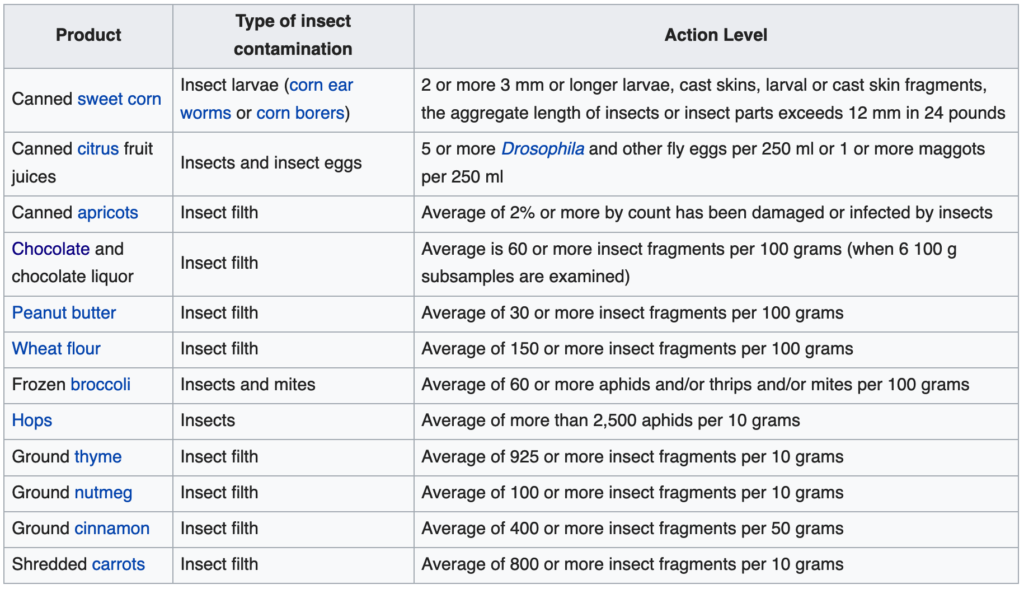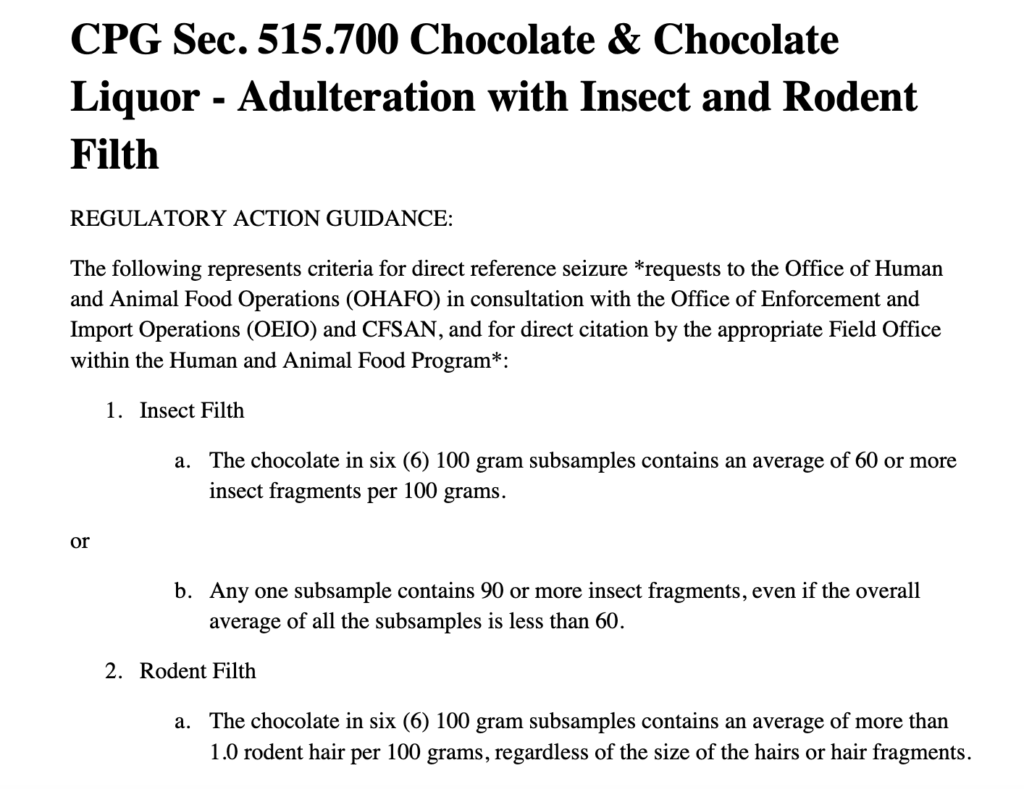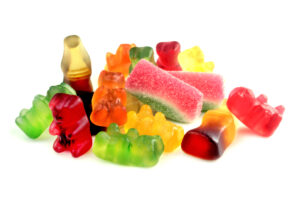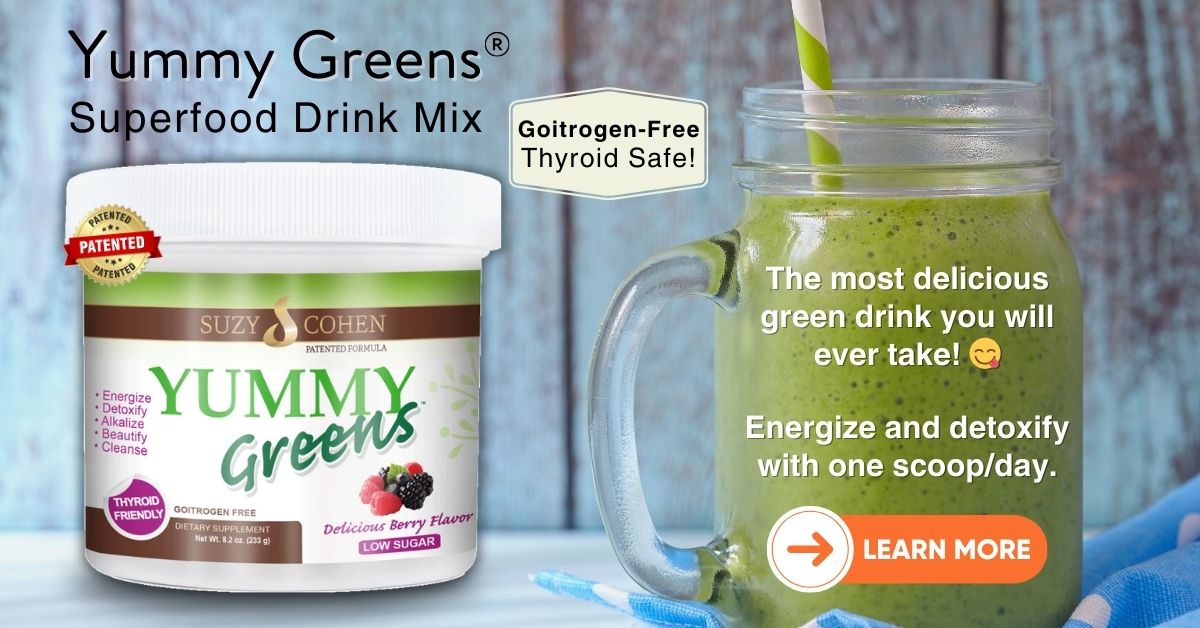
As Halloween approaches this year, a lot of parents plan special outings and trick-or-treating events for the kids. I used to do that too, even decorating the house a little bit with candy and cobwebs, but it was a very long time ago when my children were little. I’m not really fond of skeletons and morbid spiders and whatnot. 😱🕷️
I recall way back on the 1990’s, my 8-year-old son telling my neighbors that he was going to dress up as a pimp! Shocked and embarrassed I took him home to have a chat. When I asked him what that was he said: “I have no idea, but I heard one of the boys at school say that HE was going as one.” LOL! 😂
Today I am writing to tell you about the gross things that have been found in your candy. Not to dissuade you, or even to dismay you, but rather to help you keep your kids safer, and also to inform and educate you about what the Food & Drug Administration approves of… because you are never going to see “insects” on the candy ingredient list. Ever!😮
You guys know how much I despise the pushing of unnecessary, toxic chemicals on us, right? You also know by now that I hate the indiscriminate and haphazard prescribing of medications without any clue of the root cause, right? But there’s something I hate even more than all that. It’s the “The Food Defect Book” which is really short for the full title: The Food Defect Action Levels: Levels of Natural or Unavoidable Defects in Foods That Present No Health Hazards for Humans
This is a government handbook, the FDA’s food bible if you will, and this guidebook specifies the exact allowance for how many disgusting contaminants are acceptable in our food! This guidebook spells out exactly how much mold, rat hair, maggots, parasites, and bug parts can go into your food and again, the percentages are rather generous in my opinion. The guidebook is not for consumers, it is for food manufacturers, so they know how often to clean up their factories.😳

As you can see from my graphic, one peanut butter sandwich (approx. 100 grams of peanut butter) could have 30 or more pieces of insect parts on it. (Now I know that is gross, and I also know that no amount of jelly will allow you to unsee that visual so I’m sorry I’ve messed with your brain! It’s about to get worse too because red jelly sometimes has carmine in it. I’ll get to that in a minute.)
Why do they let a tablespoon of shredded carrots have up to 800 bug parts?! Frozen broccoli has aphids and mites.
My point is that the FDA allowances in their precious manual are so generous, causing one to wonder whether they work for us (the consumer), or the giant food conglomerates.
I mean what are you going to do? Sue the makers of a candy bar because you found a long hair or a bug shell? Of course not, you’d never win because it’s allowed to be in there, according to the FDA.

1. Carmine.
Crushed up beetle juice, that’s what we’re talking about here. It’s in some brands of jelly (I warned you it was about to get worse). They refer to it as “carmine” because that’s a lovely word to use, or 75470, or E129 and a few others. These are all code for carmine. I have been warning you about for 20 years now. There’s one more that is really deceptive called “natural red 4.”
What? Are you also bothered by that last alias because they can use the term “natural”?
They argue that bugs ARE natural! Beetles are not made in a laboratory; therefore, they get away with that. But vegan parents hate finding out that they’ve been feeding the kiddos something animal-derived.
Carmine is technically a natural dye that comes from liquified cochineal beetles. You will find it in millions of products actually, including the coating of red M&Ms and Skittles. It’s in probably 95% of lipsticks and lip gloss.
Squeamish customers, as well as vegan customers, launched a successful campaign against Starbucks to get rid of the buggy colorant from their beautiful Strawberry Frappuccino. Remember, pretty much anything that you eat or drink that is red or pink has this pinkish-red bug juice in it.  2. Cockroaches.
2. Cockroaches.
Weird but true, they approve of cockroach pieces and other insect parts in our chocolate candy bars. Research finds the pieces when viewed under a microscope.
No no no no no nooooo! I am so disturbed by this visual. Hey, google it if you don’t believe me! It’s absolutely mind-boggling in the most despicable way that the FDA handbook allows 60 insect pieces for every 100 grams of chocolate. That’s literally a few bites! Waaah! Why is this okay?! And why is it considered safe for consumption by our FDA?
Egad! The problem is twofold:
1. The bug parts themselves. I mean, really!
2. The spread of diseases that they carry such as salmonella, E Coli and Listeria.

Research shows that the average commercial chocolate candy bar has approximately eight insect parts (which is a gentle way of referring to a way of a ground-up cockroach or other bug bodies). Scientists insist this is unavoidable. It’s not just chocolate, there’s an allowance for these bug parts in thousands of foods, both fresh, canned and frozen.  3. Gelatin.
3. Gelatin.
Gelatin is also in a lot of these types of candies, especially the biggest name brands of candy corn and gummy bears. Read the ingredient list to see if your candy has it. Gelatin is a tasteless compound (actually a protein) that is used to thicken candy, and also lots of foods and drinks. It comes specifically from prolonged boiling of animal parts like skin, bones, connective tissue and cartilage. It is usually pork derived, but can also come from pigs, chicken, cows, and fish.
4. Shellac.
Shellac is a resin that is excreted by the female lac bug.
The bug poop is processed and dissolved in alcohol which then makes it liquid shellac, which can then be used as a food glaze or dye. You’ll find it on gobs of candy including candy corn, Raisinets, Tootsie Rolls, Junior Mints, Sugar Babies and jelly beans. And more. Sadly, it’s impossible to get away from because it’s on a lot of medications (both Rx and OTC) as well as millions of dietary supplements too! It’s a cheap way to paint on a coating and since no one is complaining about it, shellac is one of the most widely used foods, candy and supplement additives in commerce today.
These additives are not considered “unsafe,” however they are gross, unnecessary additives that should not be so rampant in our food supply. The FDA should reduce the acceptable allowances and closely regulate food makers so we don’t have to eat so many nauseating things! 🤢
If you would like to read my article on the sugar and autoimmune connection, read this…
Click Here Sugar Increases Autoimmunity and 3 Ways to Reduce It.

Suzy Cohen, has been a licensed pharmacist for over 30 years and believes the best approach to chronic illness is a combination of natural medicine and conventional. She founded her own dietary supplement company specializing in custom-formulas, some of which have patents. With a special focus on functional medicine, thyroid health and drug nutrient depletion, Suzy is the author of several related books including Thyroid Healthy, Drug Muggers, Diabetes Without Drugs, and a nationally syndicated column.

